Pork Ragu Is One of My Favorite Sauces for Fresh Pasta
Pork ragu is a rich, flavorful Italian sauce that embodies the essence of comfort food. Traditionally simmered for hours, it transforms simple ingredients into a hearty and robust dish perfect for a family dinner or a cozy night in.
The base of pork ragu starts with high-quality pork. Different cuts can be used, but pork shoulder is a popular choice due to its balance of fat and lean meat. This meat breaks down beautifully during the long cooking process, creating a tender and succulent result. Ground pork can also be used for a quicker version, though it won’t have the same depth of flavor as larger, slow-cooked pieces.
History
The history of pork ragu is deeply rooted in Italian culinary traditions, particularly within the regional cuisines of central and northern Italy. Ragu, in general, refers to a meat-based sauce simmered slowly to develop rich and complex flavors. The term “ragu” is derived from the French word “ragout,” meaning a stew of meat and vegetables.
Pork ragu is most closely associated with the Emilia-Romagna region, although variations can be found throughout Italy. This region, known for its culinary excellence, is also the birthplace of other iconic dishes such as Bolognese sauce (ragù alla bolognese), which is similar to pork ragu but traditionally made with a mixture of meats, including beef and veal.
The origins of pork ragu can be traced back to the early rural kitchens of Italy, where resourcefulness was key. Farmers and peasants would use every part of the pig, and slow-cooking tougher cuts of meat in a tomato-based sauce was an efficient way to create a nourishing and flavorful meal. The long, slow cooking process allowed the meat to tenderize and the flavors to meld together, resulting in a rich and hearty sauce.
Tomatoes, now a staple in Italian cuisine, were introduced to Europe in the 16th century after being brought from the Americas. Initially met with suspicion, tomatoes eventually became embraced in Italian cooking by the 18th century, fundamentally changing the nature of many traditional dishes, including ragu.
In traditional Italian cooking, pork ragu was often prepared for special occasions and family gatherings, reflecting the communal aspect of Italian dining culture. Each family or region might have its own version of the sauce, influenced by local ingredients and personal preferences. For instance, in some areas, red wine might be used to deglaze the pan, while white wine or broth might be preferred in others.
The evolution of pork ragu also parallels the development of pasta in Italian cuisine. As pasta became more popular and diverse in its shapes and sizes, sauces like ragu were adapted to complement these various forms. This led to the widespread pairing of pork ragu with wide noodles such as pappardelle, which effectively hold the thick, meaty sauce.
In contemporary cuisine, pork ragu has maintained its status as a beloved dish, appreciated for its comforting and rich flavors. Modern recipes often experiment with ingredients and techniques, but the essence of slow-cooking pork to create a deeply flavorful sauce remains a cornerstone of the dish.
Thus, pork ragu is a testament to Italy’s rich culinary heritage, showcasing the ingenuity and tradition of Italian cooks who transformed simple, rustic ingredients into a timeless and cherished sauce.
Preparation
The preparation of pork ragu typically begins with the “soffritto” – a finely chopped mixture of onions, carrots, and celery sautéed in olive oil. This trio of vegetables forms the aromatic foundation of many Italian dishes. Once the soffritto is softened and fragrant, garlic and sometimes pancetta or bacon are added to enhance the flavor.
Next, the pork is introduced to the pot. If using larger cuts, the meat is often browned first to develop a deeper flavor. Browning creates a Maillard reaction, which adds complexity to the sauce. Once browned, the meat is set aside, and tomato paste is added to the pot. This paste is cooked until it deepens in color, intensifying its sweetness and umami.
The pork returns to the pot with crushed tomatoes, red wine, and broth. The wine adds acidity and depth, while the broth enriches the sauce. Herbs such as rosemary, thyme, and bay leaves are commonly added, infusing the ragu with earthy and aromatic notes. The mixture is then left to simmer for hours, allowing the flavors to meld and the pork to become incredibly tender.
As the ragu simmers, it thickens and develops a deep, rich flavor. Periodic stirring and occasional adjustments of seasoning ensure that the sauce remains balanced and well-integrated. The finished ragu should be thick, with the pork falling apart into shreds.
What to Serve Pork Ragu On
Pork ragu is traditionally served over pasta, with wide, flat noodles like pappardelle being an ideal choice. The wide surface area of the noodles holds the hearty sauce well. A generous sprinkle of grated Parmesan cheese and a drizzle of good olive oil can elevate the dish further.
Beyond pasta, pork ragu can be used in lasagna, spooned over polenta, or served with crusty bread. Its versatility and comforting nature make it a beloved dish in Italian cuisine and a favorite in many households worldwide. Whether enjoyed on a cold winter night or as a part of a festive meal, pork ragu is a testament to the beauty of slow cooking and simple ingredients coming together to create something truly special.
Pork Ragu Recipe
Ingredients
- olive oil
- ½ pound pancetta cut into small dice
- 3 pounds pork shoulder also called Boston butt, 1/2 inch cubes
- 2 tablespoons Emeril’s Essence Seasoning or one of your favorites
- 4 cloves garlic chopped
- 2 carrots chopped
- 2 celery ribs chopped
- 1 sweet onion
- 1½ cups dry white wine
- 4 tablespoons tomato paste
- 28 ounces diced tomatoes and their juices
- 2 cups chicken stock
- 2 teaspoon salt
- 1 teaspoon cracked black pepper
- 2 tablespoons fresh thyme leaves chopped
- 1 tablespoon fresh sage leaves chopped
- ¾ cup heavy cream
- Parmesan freshly grated
- 3 pounds fresh pasta cooked al dente
Instructions
- In a food processor, puree garlic, carrots, celery and onions into a coarse paste. Reserve.
- In a large heavy pot, heat the oil over medium high heat.
- Add the pancetta and sauté, stirring often, until fat is rendered and the pancetta is light brown and crispy. Remove Pancetta to a bowl and reserve.
- Season the pork with Essence Seasoning. Using fresh oil for each batch (I used pancetta fat for first batch), brown the cubed pork thoroughly in small batches. The pan should accumulate the brown color from the meat. Reserve each batch of browned pork with pancetta.
- Once all meat is browned and reserved, pour out old oil.
- Add small amount fresh olive oil to the pot.
- Add pureed veggies to the pot, season them with salt, and brown them. Do not burn.
- Deglaze the pan with white wine and reduce until nearly evaporated (several minutes). Return the pork and the pancetta to the pot.
- Add the diced tomatoes tomato paste, chicken stock, salt, pepper, sage and thyme. Bring to a boil while stirring.
- Reduce heat to low-medium, cover and simmer, stirring occasionally, until the meat is very tender (about two hours). Remove from heat.
- Stir in the heavy cream.
- Adjust seasoning to taste and cover to keep warm while preparing pasta.
- Add fresh cooked pasta to the Ragu in the pot, toss it and serve.
- Sprinkle fresh Parmesan to taste over top.
- Serve immediately.

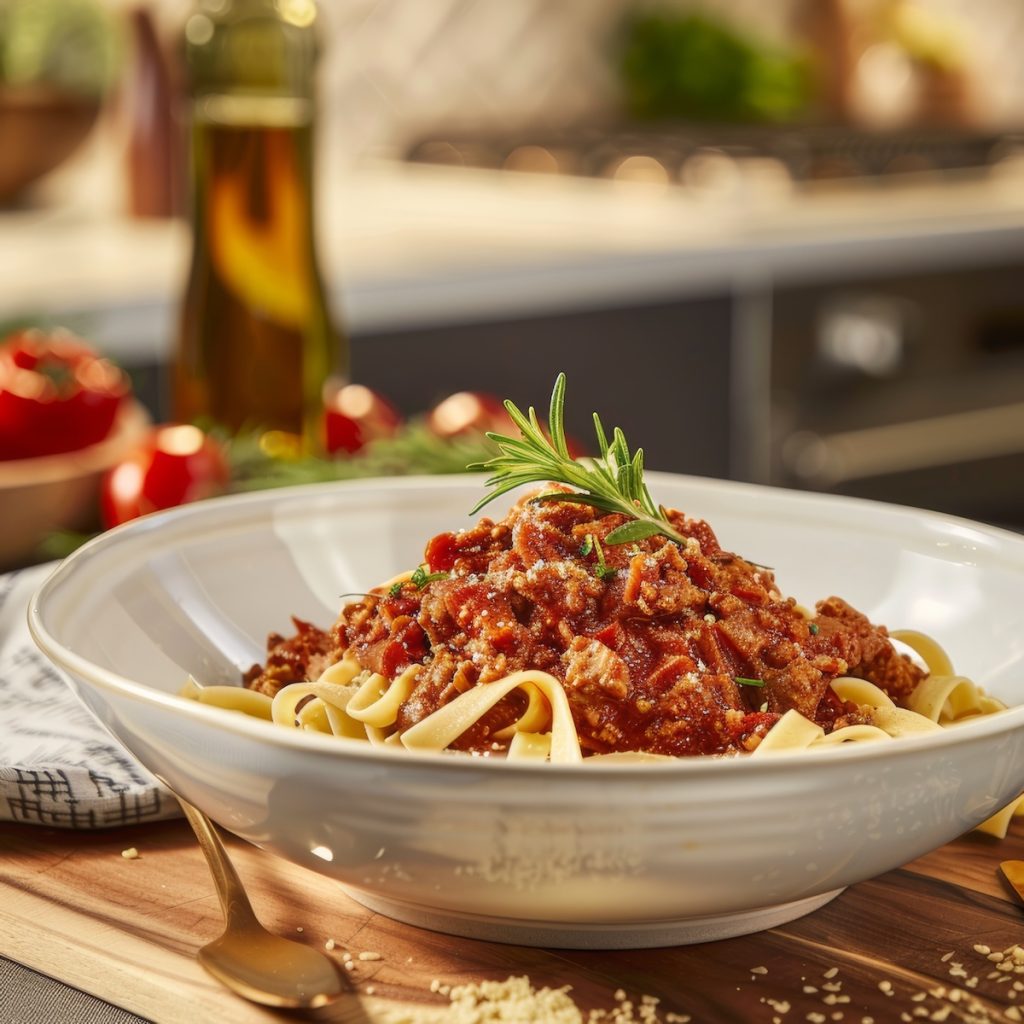
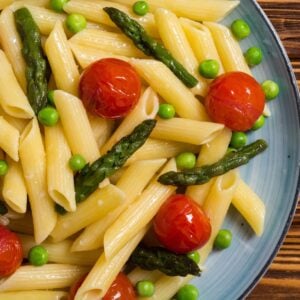
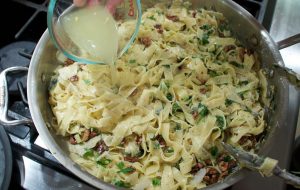


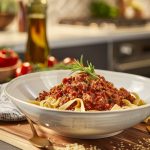
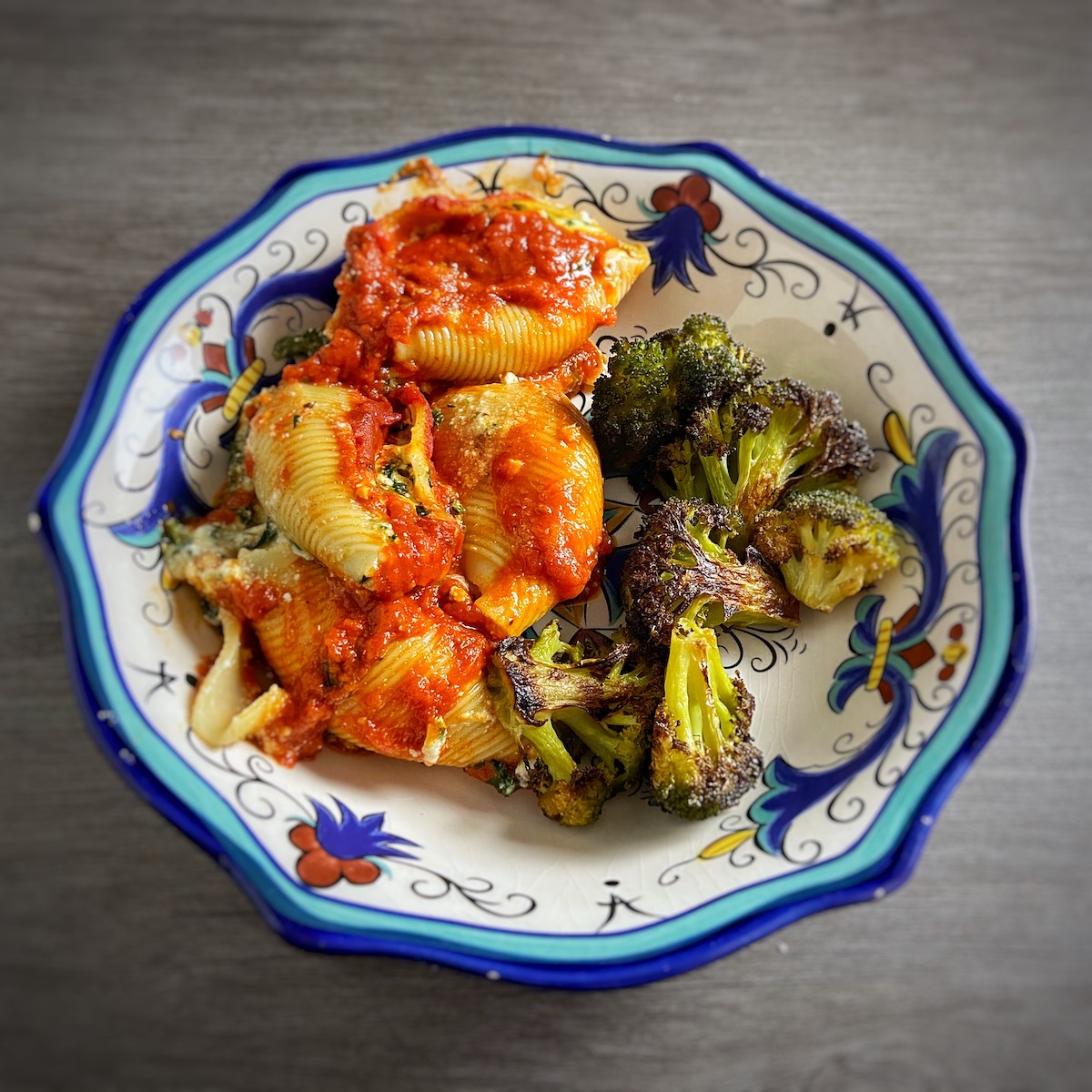
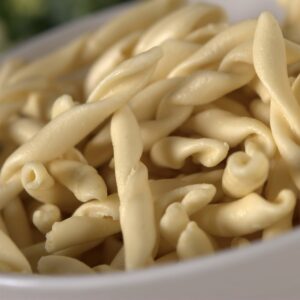
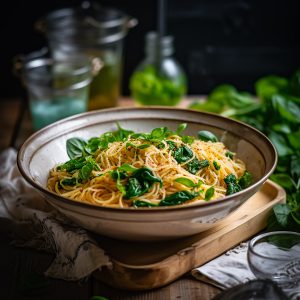
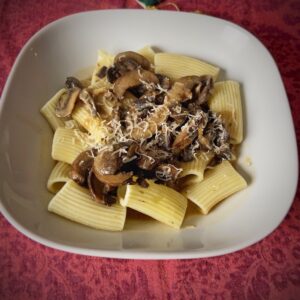
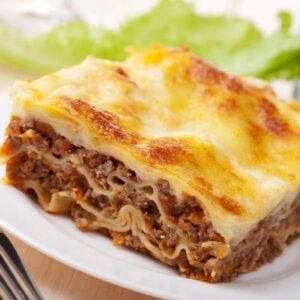
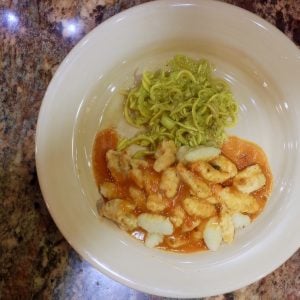
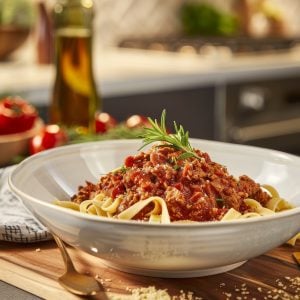


2 Responses
Can I leave out the heavy cream?
Hi Donna, as I say with most recipes, make any changes you want to make a recipe your own. Will it taste different sure but that may be a good thing for you. The heavy cream does add flavor and richness to this dish but I’m guessing you are either watching your calories or cutting back on dairy so try substituting something else.